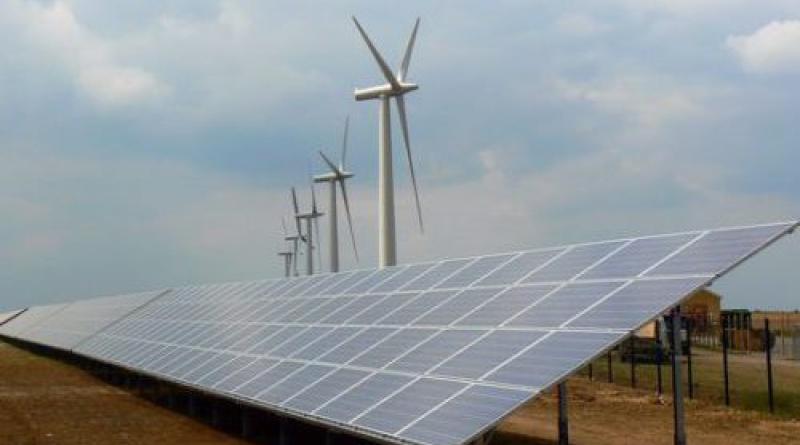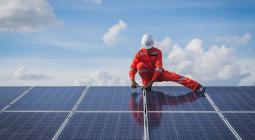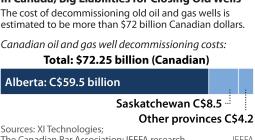Canada Can Hit 100% Zero-Emission Electricity by 2035 Without Nuclear, CCS, Report Finds

Canada can achieve 100% zero-emission electricity by 2035 with an electricity system that prioritizes renewable energy, storage, energy efficiency, and interprovincial transmission and avoids the pitfalls of nuclear generation, fossil gas, carbon capture and storage, and carbon offsets, the David Suzuki Foundation (DSF) concludes in a modelling study released this week.
And the authors note two equally important dimensions of the transition: decolonizing power to benefit Indigenous peoples, and engaging with communities at the outset to save precious time and money.
“At a time when energy security and affordability are top of mind for many Canadians, this report shows that a clean electricity pathway based on renewables offers an affordable option for ambitiously reducing emissions while meeting increasing electricity demand,” the Foundation writes.
The shift depends on “really strong, really clear federal and provincial rules,” with implementation “at the provincial level and at the community level,” DSF Climate Solutions Policy Analyst Stephen Thomas told The Energy Mix. “We also need to make sure that people in the community see the benefit of this transition for themselves individually, [and] for their community.”
The report builds on several advantages in Canada’s environment and infrastructure to detail an ambitious overhaul of the country’s electricity sector. It identifies vast potential to expand the country’s wind and solar capacity, sources cited by the International Energy Agency as “the cheapest sources of new electricity generation in history.”
Combine that with Canada’s extensive hydroelectric capacity, and a high level of variable renewable energy production is possible, the report says.
“The sun may not always shine and the wind may not always blow, but the combination of solutions that are modelled in this report shows how a grid largely powered by renewables can deliver clean electricity reliably, where and when it is needed throughout the country.”
Investments in interprovincial transmission, technology improvements, and energy efficiency will be key to flexible and reliable grid operation, the report finds. And it will be consumers and businesses who benefit when clean electricity replaces fossils, for example from the efficiency gains of replacing natural gas furnaces with electric heat pumps.
To make it happen, Canada must expand its renewable energy sector in an unprecedented leap, building more than 50,000 megawatts of new wind and solar every five years by 2050. That’s more than five times the previous record of 9,200 MW built between 2011 and 2015, but the foundation says recent policy changes in other countries show that ambitious reform in Canada is possible. Europe’s rising ambitions for expanding renewables after Russia’s invasion of Ukraine are one example.
“The case of Germany is instructive,” DSF writes. “By early 2022, with only one-fifteenth the surface area of Canada’s provinces, Germany had installed 28,000 onshore wind turbines, reaching a total wind capacity of about 56 gigawatts. By 2025, the country expects to be adding 10 GW of wind annually—an equivalent rate of deployment to what the scenarios evaluated in this report suggest.”
The model avoids dependence on potentially dangerous power sources like nuclear and fossil gas, defaulting instead to wind and solar electricity as cheap, proven technologies.
“When you have a climate and energy emergency, like now, you need to invest judiciously, not indiscriminately, to buy the most efficient solution,” the report says, quoting energy transition pioneer Amory Lovins.
“Far better to deploy fast, inexpensive, and sure technologies like wind or solar than one that is slow to build, speculative, and very costly. Anything else makes climate change worse than it needs to be,” Lovins previously told the Guardian.
The model hits net-zero without relying on carbon capture and storage, carbon offsets, or negative emissions. But to get the job done, the report says Canada will need to act quickly—with measures to prepare the work force for a transition to renewable electricity generation and mobilize investment dollars. At the same time, the country will need to introduce a national energy poverty strategy that prioritizes programming for low- and moderate-income households.
Collaboration across utilities and provinces will also be needed, but the report leaves out Canada’s northern territories, since the foundation’s model focuses on bulk electricity systems in the 10 Canadian provinces south of 60° latitude. Territorial and remote grids that are not connected to these 10 grids fell outside the scope of the report.
“That’s not at all to say that the energy transition, energy sovereignty, and specific solutions to these problems aren’t absolutely crucial in the North as well. We just think that’s a different problem to solve,” Thomas told Yellowknife, Northwest Territories-based Cabin Radio.
Canada’s plans for nation-wide zero-emission electricity transition could also be held up by sources of local opposition that block or delay new renewable energy projects. A study of public resistance to renewable energy projects in the United States found this direct opposition could be driven by NIMBYism and self-interest, or opposition from groups that do not disapprove of new projects but are anxious about specific environmental impacts or feel left out of the decision-making process.
“This means that incorporating all stakeholder perspectives from the outset of a siting process will probably save time and money,” say the study authors. “Better to deal with perceptions of possible risks and potential benefits before opponents have made up their minds, and banded together, to block the project.”
DSF’s Thomas said communities must have autonomy to develop their own energy futures, and not every proposed renewable energy project should go forward. This is especially true for Indigenous communities.
“Every energy project either happens on unceded territory or treaty lands,” he said. “So, for Indigenous communities, making sure that ownership opportunities are there, and that free, prior, and informed consent is there, and that they have a seat at the decision-making tables, is important for how we move forward.”
Indigenous thought leaders cited in a companion study to the foundation’s report say that “decarbonizing electricity requires decolonizing power and ensuring benefits flow to Indigenous communities.” Prepared by Neegan Burnside and Dean Jacobs, the study found that “Indigenous rights and title must be forefront in the planning, development and deployment of renewable generation, transmission, and storage in support of a 100% clean electricity grid.”
Christopher Bonasia | https://www.theenergymix.com/




